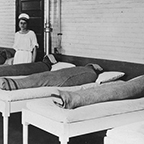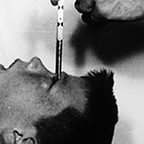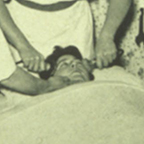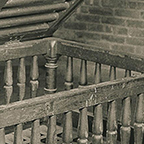
Hydrotherapy: There are several forms of hydrotherapy. The first is when patients are submerged into a tub of hot or cold water from several hours to several days. The second is being wrapped tightly in a blanket soaked in cold ice water. The third is spending time in a mini sauna for a certain amount of time. Finally, the fourth is being sprayed down with a high-pressure hose with either hot or cold water.

Lobotomy: Lobotomies, specifically pre-frontal lobotomies, where used to reduce mental illness symptoms. Pre-frontal, also known as transorbital lobotomies, involved using an instrument similar to an icepick, lifting the top eyelid, placing the instrument under the eyelid and against the top of the eye socket. Once the instrument was positioned against the eye socket, they would use a mallet to tap the end of the instrument to break through the skull and reach the brain. They would then enter the frontal lobe of the brain and make circular motions with the tool to scrape at the brain. Effects varied from patient to patient, results include, reduced self-awareness, reduced self-control, reduced responsiveness, reduced cognition, emotional stunting, slightly to severely impaired, suicidal thoughts and actions, and death. While there were successful cases, many recipients had mixed results where they were better but suffered some negative effects as well.

Electroshock Therapy (ECT): Electroshock therapy was mainly used to treat the symptoms of schizophrenia and epilepsy. It was believed that the seizures that were induced with electroshock therapy helped lessen or cure the symptoms. ETC gradually began to fall out to the public due to how the media portrayed the medical procedure. The main culprit for this reaction was from the book and movie One Flew Over the Cuckoo’s Nest.

Utica Crib: The Utica Crib was used as an alternative to strait jackets and shackles. Patients were placed in there for several days if they were “disruptive”. However the term “disruptive” was very vague so patients were placed there for many different reasons. “Disruptive” behavior included epilepsy, over-working, masturbation, nervous shaking, war-trauma, and “women issues” are a few examples. Coincidentally, these example were also reasons people were admitted to insane asylums as well. While the Utica Crib was useful for stopping self-harm and suicide, many died because of seizures, panic, and neglect while in the Utica Crib.
Some people might find images to be disturbing. Please watch with caution.